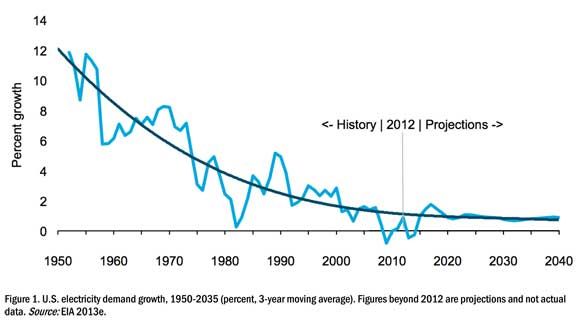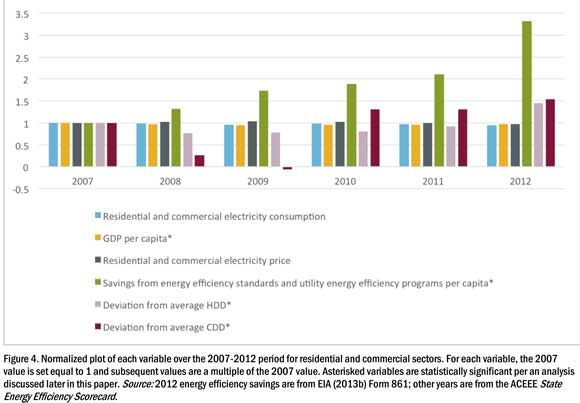The growth of electricity use has been falling for decades, but it will likely flatten out in coming years to an annual growth rate of less than 2 percent.
The decline is due to many factors, from changing weather and economic recessions to the wider adoption of energy efficiency measures. But it is the latter that might explain the trend in recent years, according to a new study from the American Council for an Energy-Efficient Economy.

ACEEE had already published data that suggested that energy efficiency was responsible for meeting 75 percent of the demand for energy services since 1970, and this most recent paper builds on that work.
Retail electricity sales were nearly 2 percent lower in 2012 than they were in 2007, which was the peak year in the past decade. ACEEE found that the recession does not explain the bulk of the energy savings. It also found that recent energy-efficiency programs and policies are important contributing factors.
ACEEE identified five key variables for residential and commercial sectors: non-manufacturing gross domestic product; average electricity price; savings from utility sector energy-efficiency programs and equipment standards; cooling degree days; and heating degree days.

Even as the number of heating and cooling days varied widely in the 2007-2012 period that was studied, savings from energy efficiency standards and utility efficiency programs grew every year. Data from Lawrence Berkeley National Lab shows that standards saved more than utility programs, 0.61 percent compared to 0.42 percent per year, respectively, from 2007 to 2012. Building codes offered about another 0.2 percent in savings.
The results of the white paper suggest that energy efficiency can continue to drive energy savings in coming years, especially if more stringent standards are enacted on the federal level. Last year, the U.S. Department of Energy pledged to clear the backlog of proposed energy efficiency standards, a move that could save customers nearly $4 billion annually. Spending on utility energy efficiency programs is also expected to double by 2025.



